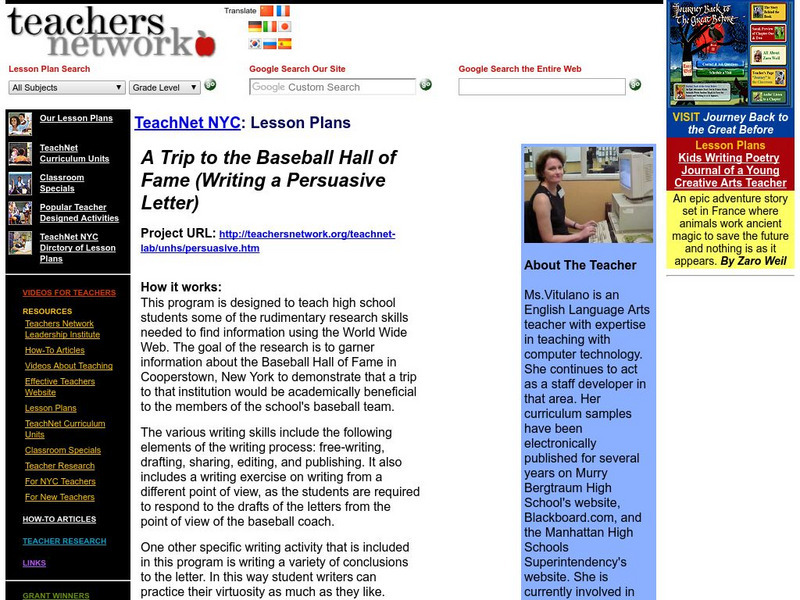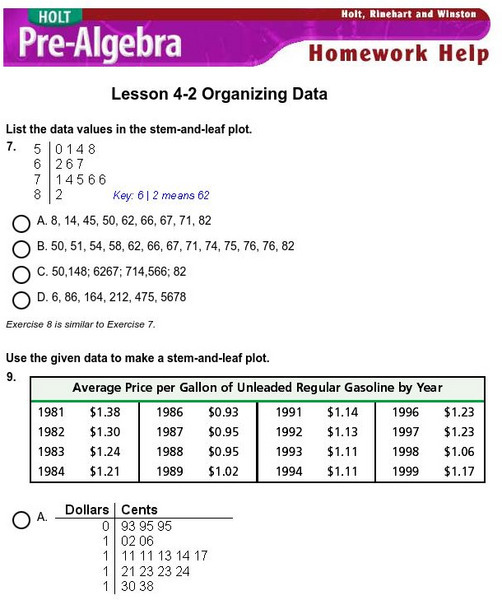Curated OER
Tasmanian Time Travel
Sixth graders perform research using the Internet about the Tasmanian Devil. The project can be presented in a variety of ways. The use of computer software is important for students to know, specifically Hyperstudio.
Curated OER
Predictions, Predictions, and More Predictions
Third graders pose questions about the subject of a short story based on the title and cover illustration; then read the story and determine if their questions actually pertained to the story line, and, if so, how the story answered the...
Curated OER
Millennium Scrapbook
Third graders create a millennium scrapbook, collecting stories about the past millennium and including photos of local, national and international events.
Curated OER
Computer Lab Lesson Plan - Science
Students examine rocks and minerals. Using the internet, students research rocks and how they are formed. They use word processing software to list minerals and materials that form specific rocks.
Grammarly
Grammarly Handbook: Organize Your Thoughts in Patterns
Tips on organizing ideas in an essay.
Sophia Learning
Sophia: Organizing Your Paper
Two slideshows and a screencast on organizational patterns used when writing essays and speeches. The first is a 20-slide presentation explaining the seven most common organizational patterns used in writing: time sequence, spatial,...
Polk Brothers Foundation Center for Urban Education at DePaul University
Depaul University: Center for Urban Education: Organize an Argument [Pdf]
This site provides a nonfiction graphic organizer that will help students organize an argument.
Lumen Learning
Lumen: Writing Process: Organizing
This lesson focuses on the organization of your paper including how to write a thesis statement, the elements of an effective paragraph, patterns of organization, transitions, and conclusions. It also provides a video of the Toulmin...
Polk Brothers Foundation Center for Urban Education at DePaul University
De Paul University: Center for Urban Education: How Does Writer Organize Nonfiction Text?[pdf]
This poster contains writing craft questions for students to ask when reading nonfiction. This graphic organizer is a copyrighted material that may be used for educational purposes.
Grammarly
Grammarly Handbook: Patterns of Organization for Academic Texts
A list of six different ways to organize a text with links to more information for each.
Texas Education Agency
Texas Gateway: Make Inferences in Informational/expository Text
[Accessible by TX Educators. Free Registration/Login Required] In this lesson, you will be taking a look at how authors of informational texts, such as expository texts, organize their writing and the effects that organization can have...
Other
Ncte: Organizing Your Writing
This PDF article explains five different patterns of organization to help students select an organization that matches the purpose of their writing so that the audience can more easily follow along. The patterns are sequential, spatial,...
Sophia Learning
Sophia: Writing Arguments
This tutorial focuses on argumentative and persuasive writing: it lists and defines the components of arguments, provides a flow chart for argumentative writing, defines counterarguments, and lists the 3 elements of persuasion: ethos,...
Tom Richey
Slide Share: Text Structures: Analyze Organizational Methods
This slideshow focuses on text structures for informational texts including how the author's purpose helps determine the organizational pattern to use and how the reader can use clues to identify the text structure used. Five...
Scholastic
Scholastic: Informational Text: Reading Response: Compare Contrast [Pdf]
This graphic organizer can be use with students when they read an informational text. Using a Venn diagram to organize content, students will write important similarities and differences after reading an informational text and analyzing...
Louisiana Department of Education
Louisiana Doe: Louisiana Believes: Ela Guidebooks: Organizational Frames for Writing
This strategy helps students prepare and organize thoughts about text, develop a written response in the form of a short or extended response, and use standard English grammar, usage, and conventions in writing.
Other
Prezi: Nonfiction Text Structures
Slideshow examines the five most common text structures used by authors to organize nonfiction writing.
Other
Carson Newman College: Close Reading of a Literary Passage [Pdf]
Provides a number of questions that students can ask themselves about a literary passage when doing a "Close Reading" and following this with an organized piece of writing. CCSS.ELA-Literacy.CCRA.R.5
Other
Teachers Network: A Trip to Baseball Hall of Fame (Writing a Persuasive Letter)
This lesson focuses on improving students' persuasive writing skills. Students reseach baseball and then write a persuasive essay to convince the baseball coach that a trip the Baseball Hall in Fame would be beneficial to the members of...
Other
Affiliate Success tips.com: Using Your Web Browser
AffiliateSuccessTips.com offers excellent tips for using your web browser, including email, organizing folders, cutting and pasting, and more.
Houghton Mifflin Harcourt
Holt, Rinehart and Winston: Homework Help Independent Practice: Stem and Leaf Plot
Get independent practice organizing data and using stem-and-leaf plots. Each incorrect response gets a text box explanation and another try. Correct responses are confirmed.
Other
Interacting Texts Directed Activities Related to Texts (Darts)
Want to improve your students' reading skills? This is a good place to find the types of directed activities, using a definition text, reconstruction/analysis activities, and advantages of using DARTs.
Better Lesson
Better Lesson: W.3.1a: Introduce the Topic or Text They Are Writing About
Links to 12 lessons and activities that build student skills in standard W.3.1a: Introduce the topic or text they are writing about, state an opinion, and create an organizational structure that lists reasons.
Curated OER
Mc Graw Hill: Structure Within a Story
Learn why structure is important when organizing a story then read an excerpt from the story "Three over Four" to practice how structure helps to develop the story's theme, setting, and plot.





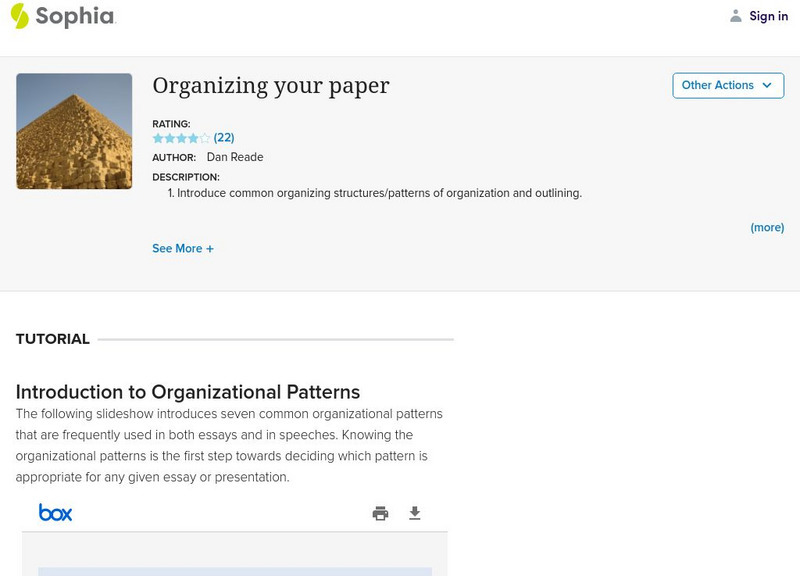
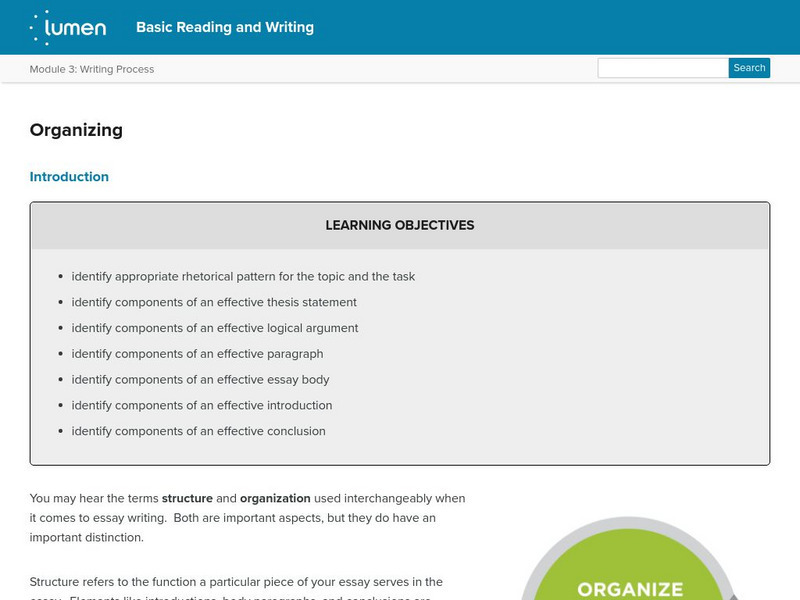

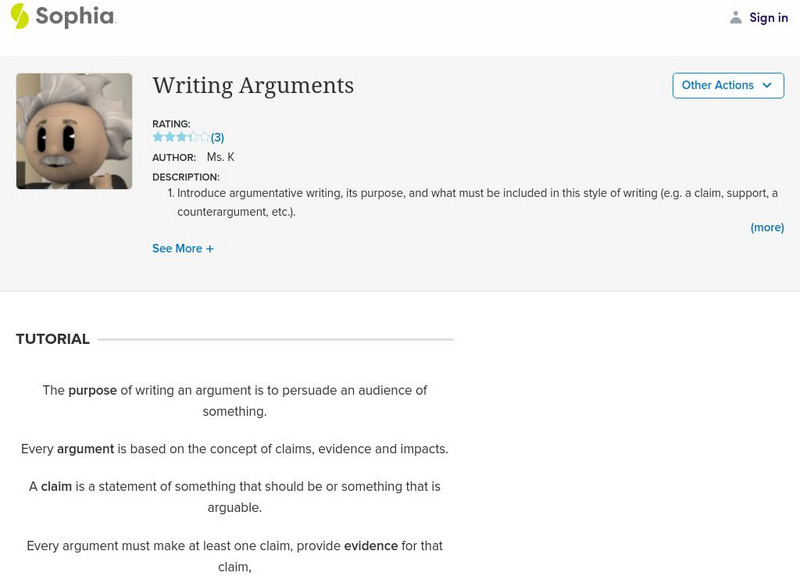
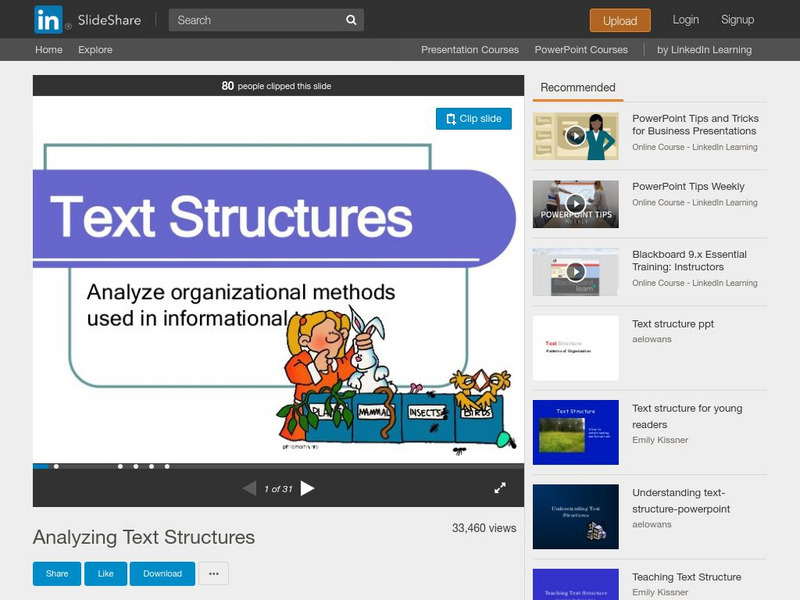
![Scholastic: Informational Text: Reading Response: Compare Contrast [Pdf] Graphic Scholastic: Informational Text: Reading Response: Compare Contrast [Pdf] Graphic](https://content.lessonplanet.com/knovation/original/266411-709e2a628c559574de71e4fd23831b4b.jpg?1661510822)

